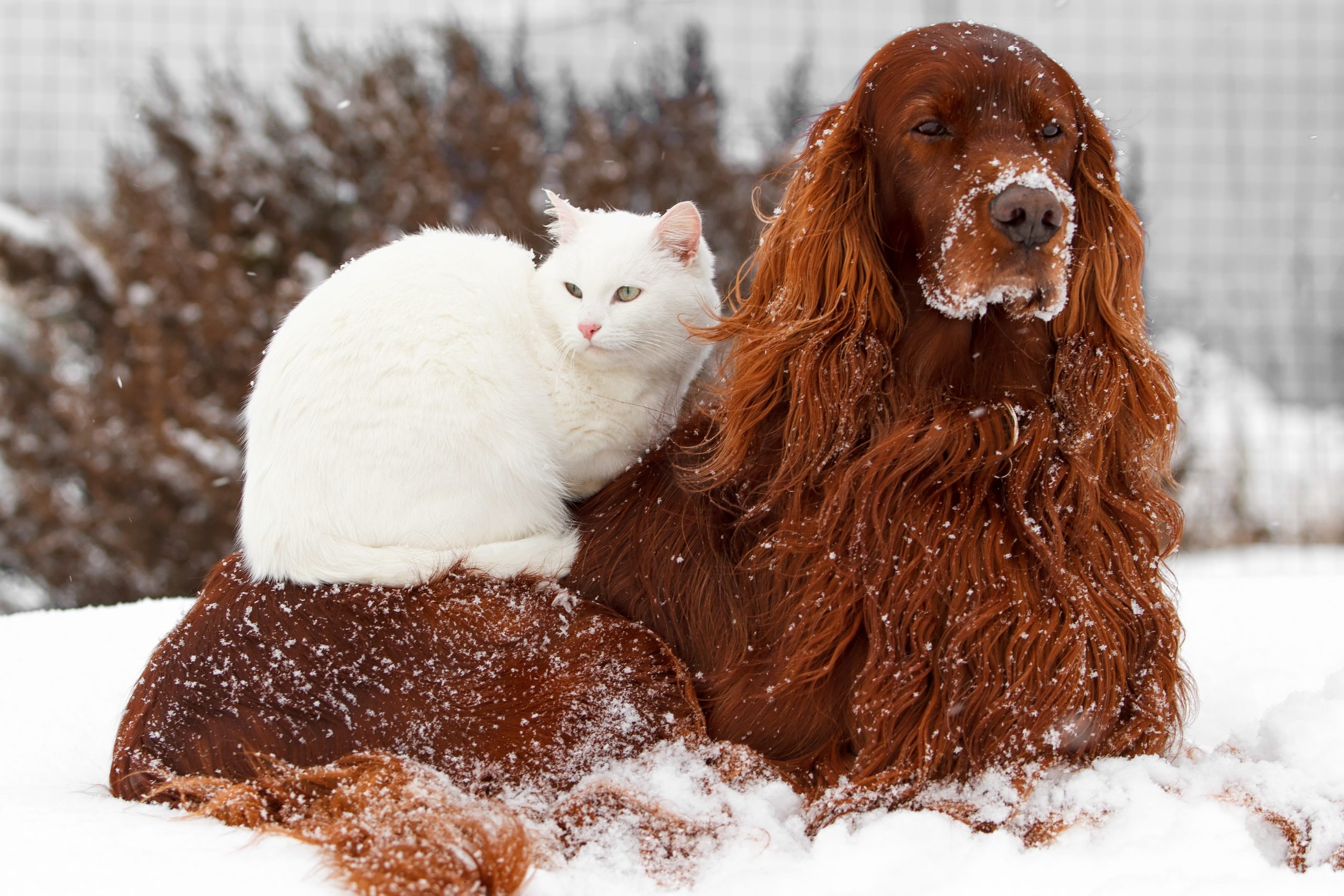CBD & Joint Health for Fall Weather
As the crisp brisk winds of autumn roll in and daylight shortens, many pet parents notice changes in their furry companions’ mobility and comfort. Joints that once felt supple and nimble may begin to stiffen in the cooler, damper air. For older pets or those with underlying joint sensitivities, that seasonal shift can make walks feel more labored, leaps more tentative, and play more cautious. In this transitional time, thoughtful joint support becomes especially important—and many pet parents are turning to CBD as a natural complement to their care routines.
In this article, we’ll explore how CBD may support joint health through fall weather, and how you can integrate CBD into a seasonal wellness plan for your companion.
Why Fall Weather Matters for Joints
Fall brings changes in more than just the scenery. Several environmental and physiological shifts can impact joint comfort:
- Temperature and circulation. Cooler temperatures may slow peripheral blood flow, making muscles and connective tissue stiffer. Reduced circulation can make joints feel “cold” and less nimble.
- Barometric pressure shifts. Fluctuations in barometric pressure, which often accompany autumn storms, can cause expansion or contraction of joint capsules, ligaments, and tendons—potentially heightening sensitivity in pets predisposed to joint discomfort.
- Reduced activity. With shorter daylight hours, pets may move less, lose some muscle tone, and stiffen from underuse.
- Moisture and humidity. Damp, foggy, or humid conditions may exacerbate joint soreness or stiffness in some individuals.
Because of these seasonal challenges, the fall is an ideal time to proactively support your pet’s joint health, help maintain mobility, and reduce the “creakiness” that sometimes sets in.
How CBD Works with Joints
To understand why CBD shows promise for joint support, it helps to see how it interacts with natural regulatory systems in the body—especially the endocannabinoid system (ECS).
The ECS and Joint Tissues
Joints are complex anatomical systems involving cartilage, synovial fluid, ligaments, tendons, and connective tissues. The ECS is intimately connected to many of these structures: nerve fibers, cell signaling, and chemical communication run through and around joint tissues.
When tissues become stressed—whether from overuse, microtrauma, or age-related decline—the ECS can upregulate receptors locally in an attempt to restore balance. Over time, that self-regulation may need external support.
In joint tissues, CBD (and other compounds) respond to stress signals, causing the release of soothing chemicals, helping reduce temporary discomfort and promote normal function and inflammatory responses. CBD has been shown to support normal inflammatory balance in tissues including joints—helping to manage occasional episodes of irritation or swelling.
Weather or other short-term joint stresses often generate reactive oxygen species (free radicals).. Because CBD acts as an antioxidant, it can help donate stabilizing electrons to neutralize free radicals, thereby limiting cascades of tissue stress.
Together, those two mechanisms—modulating signaling in the ECS and supporting normal inflammation / oxidation balance—are the theoretical backbone for how CBD may help sustain joint comfort, flexibility, and mobility.
Why Early Fall Is a Smart Time to Begin or Adjust Joint Support
Many pet parents wait until winter or clear signs of stiffness before acting. But beginning in early fall can give you a head start:
- Proactive support – If you begin supplementation before discomfort becomes overt, you may help prevent stiffness from worsening.
- Gradual adjustment – You can slowly ramp up or fine-tune administration as your pet transitions into colder months.
- Seasonal adaptation – Starting in fall allows your pet’s system time to acclimate, so winter’s chill won’t feel as jarring.
- Combine with seasonal care – Autumn also offers opportunities for joint-friendly practices like moderate walks, indoor stretching, muscle warmups, and gentle massage in the cooler air.
Canna Companion’s Joint Support Products
If you’re looking for tried-and-tested formulas, Canna Companion’s joint capsule line offers several size- and species-tailored options.
- For cats: Joint Support CBD capsules (2.05 mg per capsule) help ease occasional stiffness, support flexibility, and provide antioxidant protection.
- For small dogs (<20 lb): The small dog Joint Support capsule offers 2.05 mg of CBD per capsule.
- For medium dogs (21–50 lb): The medium dog capsule delivers 3.55 mg per dose.
- For large dogs (51–80 lb): The large-dog formula provides 4.4 mg per capsule.
- For extra large dogs (81+ lb): The extra large dog variant offers 5.25 mg per capsule.
These formulations are designed to last 30–60 days depending on frequency of administration.
Because they are full-spectrum and ratioed, the capsules can deliver a more calibrated benefit than pure CBD isolates.
A Fall Joint Health Strategy: Layered Support & CBD Integration
Here is a seasonal, multi-layered plan to preserve your pet’s joint comfort as fall deepens:
1. Baseline health checks
- Veterinary consultation
Always consult your vet before introducing CBD, especially if your pet is on medications or has underlying sensitivities. - Assess body condition
Excess weight is one of the biggest stressors on joints. A lean, healthy weight eases pressure on hips, knees, ankles, and spine.
2. Gentle, consistent movement
- Use low-impact exercises such as slow walks (morning and evening), underwater treadmills or swimming (if your pet tolerates water), gentle play, or soft-surface strolls.
- Avoid abrupt bursts of intense activity—the cooler air makes muscles less pliable at first. Warm your pet with a brief leash walk before letting them move freely.
- Incorporate light stretches or range-of-motion work (e.g. passive limb flexes) when your pet is relaxed.
3. Warmth and joint “micro-climates”
- Provide warm bedding, perhaps with a heated pad or orthopedic cushion, to help joints stay loose overnight.
- Use light sweaters or jackets in particularly cool or damp weather to help maintain peripheral warmth.
- Avoid cold damp floors; use rugs or mats for walking surfaces inside the house.
4. Local support: massage and essential oils
- Use a gentle massage to support circulation, reduce muscle tension, and aid joint lubrication.
- Consider blending a drop or two of joint-supportive essential oils with a base oil (like fractionated coconut oil) and massaging lightly around joints (never apply undiluted oils directly).
- Administer CBD about an hour before massage to help your pet relax and enhance the therapeutic effect.
5. Diet, supplements, and nutrition
- A nutrient-dense diet supplies building blocks for healthy joints. Phase out processed foods, emphasize whole proteins, omega-3s (e.g. algal & fish oil), and joint-friendly micronutrients.
- Monitor and limit treats; use healthy options like freeze-dried meats or vegetables.
- Ensure consistent hydration to maintain joint fluid viscosity and tissue health.
6. Begin CBD (or adjust) in fall
- Start with Canna Companion’s Joint Support capsules, sized appropriately for your pet’s weight and health status.
- Begin with the manufacturer’s labeled starting dose and monitor your pet’s response for 2–4 weeks. Adjust as needed.
- Consider layering in CBD oil for situational support (e.g. single dose after extended play or in colder snaps) alongside regular capsule administration.
- Be consistent. A regular schedule helps stabilize ECS signaling and build resilience over time.
7. Monitor, adjust, and collaborate
- Keep a journal of daily mobility, stiffness, play behavior, and any discomfort signs.
- Reassess administration frequency or supplement combinations if stiffness returns.
- Partner with your vet for periodic checkups, bloodwork (if needed), and imaging as your pet ages.
Realistic Expectations & Cautions
It’s essential to approach CBD as a supportive tool—not a miracle cure. Instead, it helps the ECS mediate stressed tissues so your pet may feel better within their natural limitations.
Here are some caveats and best practices:
- Response times vary. Some pets show subtle improvement within a few days; others may require several weeks of consistent use.
- Use quality, tested products. Always select veterinary-grade, third-party lab–tested CBD formulations.
- Start low, go slow. Gradually increase frequency of administration, particularly in sensitive pets.
- Observe for side effects. While CBD is generally well tolerated, possible side effects include mild sedation or GI upset.
Looking Ahead: Winter, Maintenance & Seasonal Transitions
By starting in the fall, you’ve built a foundation to carry through colder months. As the seasons shift:
- Reassess your pet’s gait and mobility each month.
- Continue joint-friendly practices even on chilly or gloomy days—indoors or with warm-ups.
- Keep CBD dosing consistent; avoid large swings unless advised by your vet.
- If you ever need short-term extra support (e.g. after intense play, on cold snap mornings), a measured dose of oil can augment the capsule base. This is an approach particularly helpful for older dogs needing additional winter joint support.
When spring returns and your pet feels lively again, maintain your regimen through seasonal ups and downs—but always remain attentive: joint health is a lifelong journey.
Final Thoughts
Fall may come with cooler days, shifting storms, and unpredictable weather—but it doesn’t have to mean stiff joints and cautious steps for your companion. By anticipating seasonal challenges, layering supportive strategies, and integrating carefully formulated CBD products, you can help preserve mobility, ease discomfort, and foster a more active, comfortable life through the cold months ahead.



